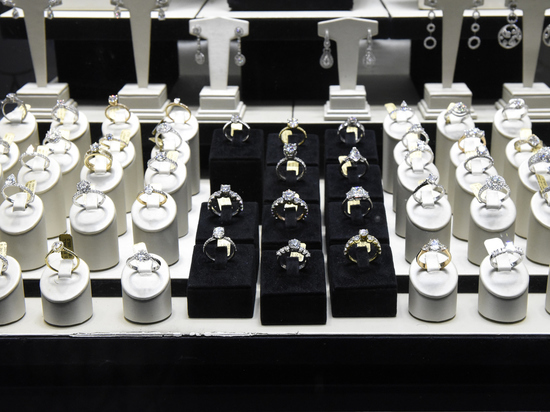New Western sanctions: importers will be required to confirm the non-Russian origin of diamonds
[ad_1]

Otherwise they will be punished
G7 countries may require importers to report on the non-Russian origin of diamonds. In fact, this measure refers to secondary sanctions, that is, in relation to the Russian Federation, it will act indirectly, and not “on the forehead.” However, according to experts, it should be taken as seriously as possible: it seems that we are talking about the refusal of the West from the old, exhausted mechanisms of sanctions policy, and the transition to some new strategy and new methods.
As follows from the report of the head of the US Office for the Coordination of Sanctions James O’Brien, companies will be required to declare the origin of gems imported to America and other Western markets. The G7 countries will discuss the possibility of introducing such an option at their next meeting in mid-May, according to industry news agency Rapaport. According to O’Brien, the goal is to limit the income of the world’s largest diamond miner, the Russian company Alrosa, which is partly owned by the state. In the West, they fear that the funds she receives may be used to finance a special operation in Ukraine.
Meanwhile, Alrosa has been under sanctions since the end of February last year. First, she was banned from raising capital through the issuance of shares and bonds on American exchanges, and then completely blocked her assets. In March 2022, the United States restricted the import of almost all types of rough diamonds from the Russian Federation, including cut ones, that is, diamonds. The largest jewelry brands such as Cartier and Tiffany & CO have also stopped buying them. However, the bulk of supplies were not affected as they continued to go to Antwerp, Mumbai and Dubai. According to the US Treasury, diamonds are still in the top 10 of Russia’s non-energy exports. In the “pre-sanctions” 2021, their trade brought Moscow $4.5 billion.
“The global diamond market is an extremely closed structure,” says Artem Deev, Head of the Analytical Department at AMarkets. – There is always a demand for quality stones, regardless of where and how they are mined. For example, in Africa, this sometimes happens not in the most legal way. The first sanctions against the Russian diamond sector were introduced back in 2018, when our producers reduced supplies to Europe, replacing most of them with exports to India (where, by the way, almost all cutting is done, and from here it is sent to the largest markets, including the US). And the key European player in this market – Belgium – continued to receive them in the same volume, mainly through intermediaries.
According to Deev, technically it is far from always possible to trace the path of diamonds from the moment of extraction to sale on some trading platform. For this, there are no proven tools that give a 100% guarantee. Therefore, the current initiative of Washington (it comes from the US Jewelers Vigilance Committee) looks like another attempt to take control of something that a priori is not amenable to any regulation. In the case of diamonds, there will certainly be workarounds, as happened with Russian oil: despite all the restrictions, rough from the Russian Federation is sold on the markets in almost the same volumes, although with a huge discount and inevitable damage to the country’s budget.
“I would not underestimate the risks,” says Nikita Maslennikov, a leading expert at the Center for Political Technologies. – The new US initiative indicates a change not even in tactics, but in the strategy of sanctions pressure on Russia. From a comparatively quick assault, the West is moving to a long-term siege. The regime of secondary sanctions and law enforcement is being tightened against those counterparties who help Russia trade with foreign countries using some of their own channels. There will be more and more such “gifts”, such as the requirement to declare the origin of diamonds.”
Of course, the export of diamonds is far from the most sensitive part of Russian exports, it is not oil, gas, or tens of billions of dollars of profit. And yet there is little good here: losses for the economy and the budget of the Russian Federation cannot be avoided in any case, Maslennikov notes. In his opinion, the measure proposed by the United States is fraught with an increase in prices for diamond products for end consumers in many countries.
[ad_2]
Source link






